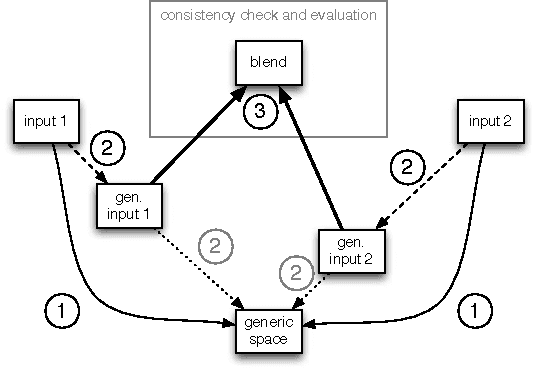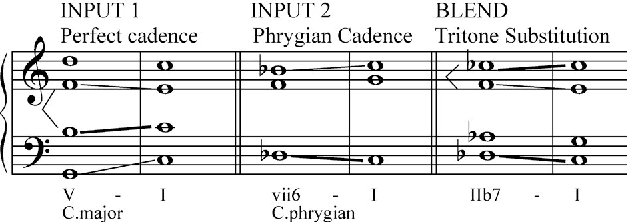Maximos Kaliakatsos-Papakostas
A Dataset for Greek Traditional and Folk Music: Lyra
Nov 21, 2022Abstract:Studying under-represented music traditions under the MIR scope is crucial, not only for developing novel analysis tools, but also for unveiling musical functions that might prove useful in studying world musics. This paper presents a dataset for Greek Traditional and Folk music that includes 1570 pieces, summing in around 80 hours of data. The dataset incorporates YouTube timestamped links for retrieving audio and video, along with rich metadata information with regards to instrumentation, geography and genre, among others. The content has been collected from a Greek documentary series that is available online, where academics present music traditions of Greece with live music and dance performance during the show, along with discussions about social, cultural and musicological aspects of the presented music. Therefore, this procedure has resulted in a significant wealth of descriptions regarding a variety of aspects, such as musical genre, places of origin and musical instruments. In addition, the audio recordings were performed under strict production-level specifications, in terms of recording equipment, leading to very clean and homogeneous audio content. In this work, apart from presenting the dataset in detail, we propose a baseline deep-learning classification approach to recognize the involved musicological attributes. The dataset, the baseline classification methods and the models are provided in public repositories. Future directions for further refining the dataset are also discussed.
Conditional Drums Generation using Compound Word Representations
Feb 21, 2022



Abstract:The field of automatic music composition has seen great progress in recent years, specifically with the invention of transformer-based architectures. When using any deep learning model which considers music as a sequence of events with multiple complex dependencies, the selection of a proper data representation is crucial. In this paper, we tackle the task of conditional drums generation using a novel data encoding scheme inspired by the Compound Word representation, a tokenization process of sequential data. Therefore, we present a sequence-to-sequence architecture where a Bidirectional Long short-term memory (BiLSTM) Encoder receives information about the conditioning parameters (i.e., accompanying tracks and musical attributes), while a Transformer-based Decoder with relative global attention produces the generated drum sequences. We conducted experiments to thoroughly compare the effectiveness of our method to several baselines. Quantitative evaluation shows that our model is able to generate drums sequences that have similar statistical distributions and characteristics to the training corpus. These features include syncopation, compression ratio, and symmetry among others. We also verified, through a listening test, that generated drum sequences sound pleasant, natural and coherent while they "groove" with the given accompaniment.
DeepDrum: An Adaptive Conditional Neural Network
Sep 17, 2018

Abstract:Considering music as a sequence of events with multiple complex dependencies, the Long Short-Term Memory (LSTM) architecture has proven very efficient in learning and reproducing musical styles. However, the generation of rhythms requires additional information regarding musical structure and accompanying instruments. In this paper we present DeepDrum, an adaptive Neural Network capable of generating drum rhythms under constraints imposed by Feed-Forward (Conditional) Layers which contain musical parameters along with given instrumentation information (e.g. bass and guitar notes). Results on generated drum sequences are presented indicating that DeepDrum is effective in producing rhythms that resemble the learned style, while at the same time conforming to given constraints that were unknown during the training process.
An Argument-based Creative Assistant for Harmonic Blending
Mar 06, 2016



Abstract:Conceptual blending is a powerful tool for computational creativity where, for example, the properties of two harmonic spaces may be combined in a consistent manner to produce a novel harmonic space. However, deciding about the importance of property features in the input spaces and evaluating the results of conceptual blending is a nontrivial task. In the specific case of musical harmony, defining the salient features of chord transitions and evaluating invented harmonic spaces requires deep musicological background knowledge. In this paper, we propose a creative tool that helps musicologists to evaluate and to enhance harmonic innovation. This tool allows a music expert to specify arguments over given transition properties. These arguments are then considered by the system when defining combinations of features in an idiom-blending process. A music expert can assess whether the new harmonic idiom makes musicological sense and re-adjust the arguments (selection of features) to explore alternative blends that can potentially produce better harmonic spaces. We conclude with a discussion of future work that would further automate the harmonisation process.
 Add to Chrome
Add to Chrome Add to Firefox
Add to Firefox Add to Edge
Add to Edge